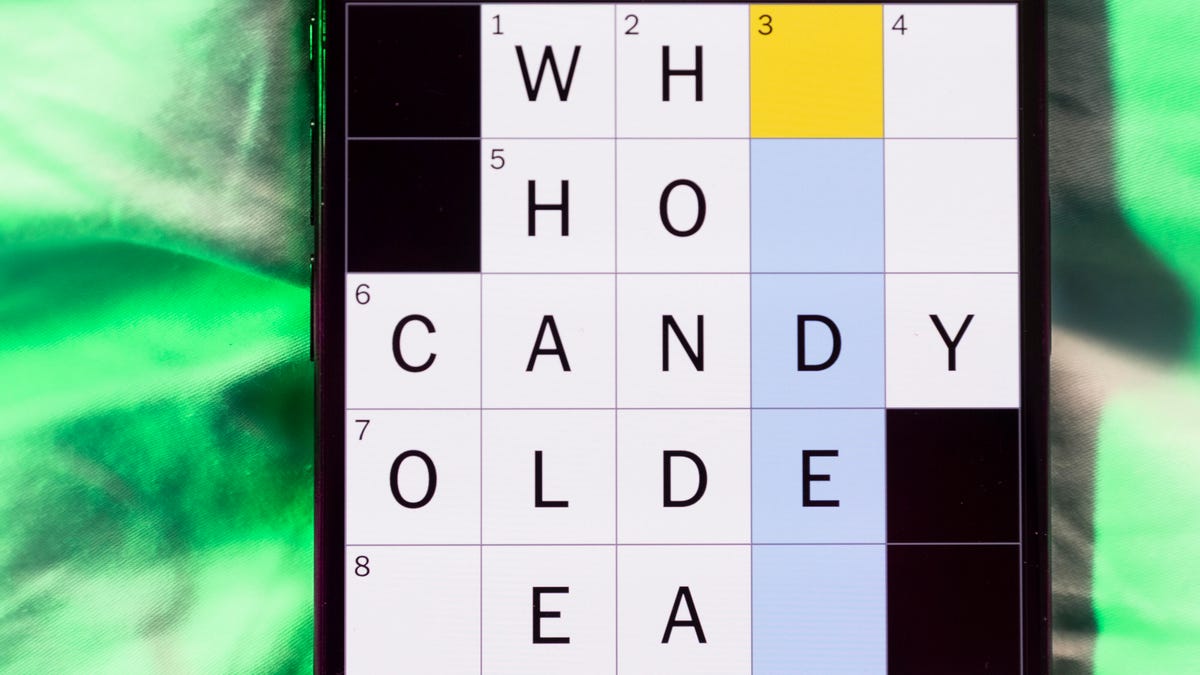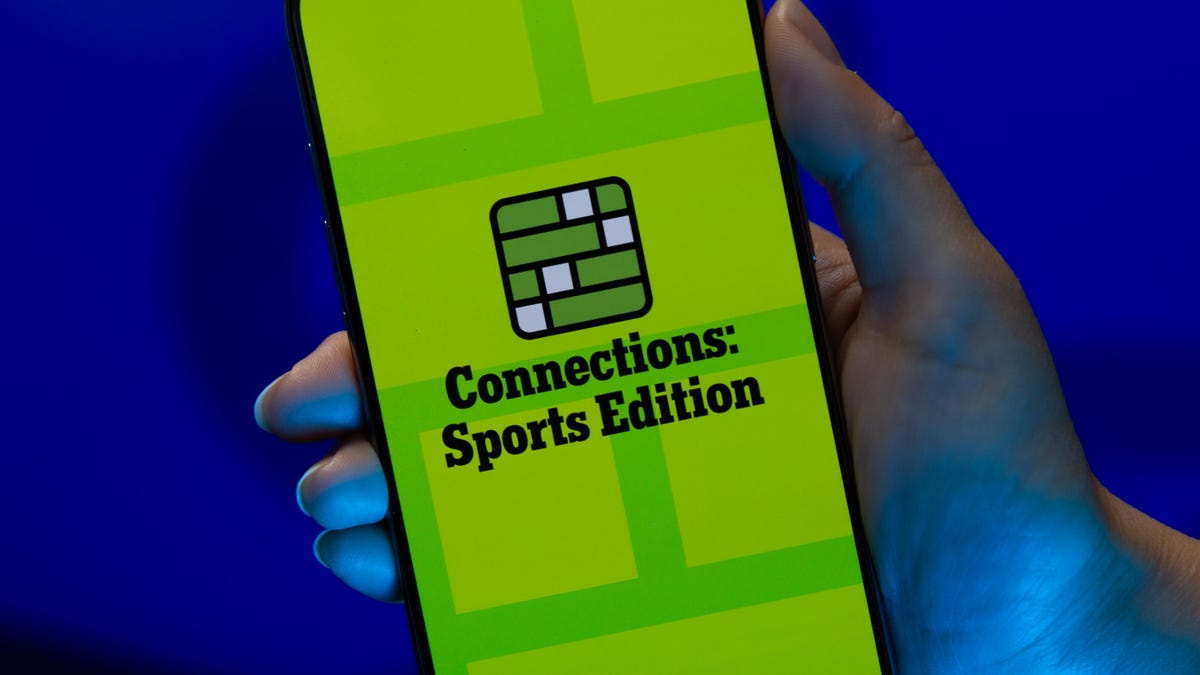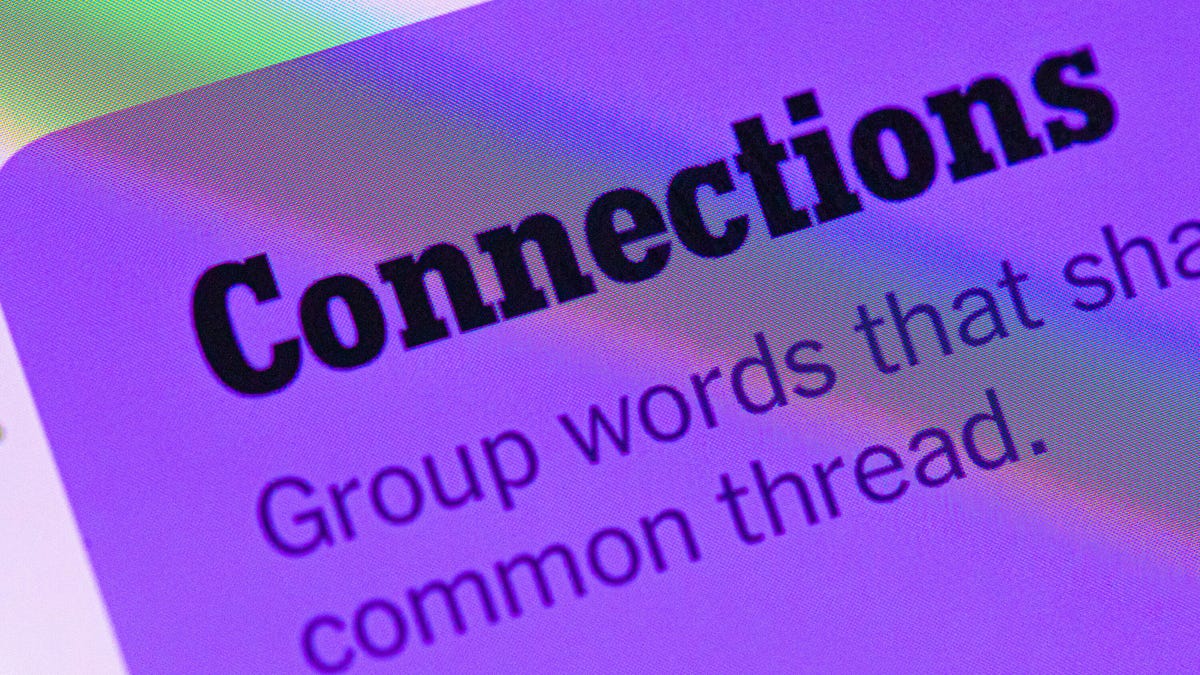Technologies
iPhone 16E Specs vs. Google Pixel 8A: How Apple and Google’s Lower-Cost Phones Match Up
If you’re comfortable with a used Pixel 8A, you might get a lot of phone for the money compared to buying Apple’s lowest-cost iPhone.
Google’s A-series Pixel handsets are typically budget-friendly, but currently the cheapest Google goes is $499 for the Pixel 9A. If you do want all of Google’s flagship features and are comfortable with getting a used or refurbished device, you could check out last year’s Pixel 8A which is going for under $300 in the secondary market. Strangely, Google is currently selling the Pixel 8A for the same price as the Pixel 9A, so it doesn’t make sense to buy a new version of the Pixel 8A.
A sub-$300 Pixel 8A is an especially good deal when compared to the entry-level $599 iPhone 16E. Sure, the iPhone 16E offers a lot of features for its price and is certainly the most affordable iPhone you can get at retail. Yet, that price isn’t exactly affordable when compared to the Pixel 8A. If you prefer to buy new, we’ll point you to the comparison of the Pixel 9A vs the iPhone 16E. But if you’re open to getting a used Pixel 8A for an even lower price, we’ve compared the iPhone 16E and the Pixel 8A below.
Design and display
The most obvious difference between the two phones is that the iPhone 16E has a notch at the top of the screen (The iPhone 16, on the other hand, has a Dynamic Island instead), while the Pixel 8A just has a single dot for the front-facing camera. Size-wise, however, they’re both pretty comparable. They both roughly measure around 6 by 3 by 0.3 inches (you can find more exact measurements in the chart below), plus both have a 6.1-inch OLED screen.
The iPhone 16E, however, has a fixed refresh rate of 60Hz, while the Pixel 8A can switch between 60 and 120Hz for smoother scrolling and a more immersive gaming experience. That said, the iPhone 16E’s A18 processor does run more intensive games like Death Stranding and Resident Evil 4 Remake. While those more console-level games are not yet available on the Google Play Store, the Pixel 8A’s Tensor G3 should still be able to run most Android games at medium to low graphics settings.
Cameras
One of the biggest limitations of the iPhone 16E is that it just has a single rear 48-megapixel camera. The Pixel 8A, on the other hand, has two rear cameras placed within a camera bar on the back: a 64-megapixel lens plus a 13-megapixel ultrawide lens. Even when it comes to the front-facing selfie camera, the Pixel 8A’s version is better. It has a 12-megapixel front-facing lens while the iPhone 16E has a 7-megapixel one.
AI features
The iPhone 16E might be an entry-level handset, but it does support Apple Intelligence, a feature that was previously only in higher-end models like the 15 Pro and the iPhone 16. Apple Intelligence isn’t fully fleshed out yet, but it currently offers some benefits including a Clean Up tool for removing obstacles in photos, text summarization plus writing tools that help correct editing errors. An improved Siri is also apparently on its way, but it has been delayed.
The Pixel 8A, on the other hand, has all the features of Google’s Gemini that are also on the higher-end Pixel handsets. It can run Google’s Gemini Nano AI model, use photo-editing tools such as Best Take and Magic Eraser, and more. Gemini will eventually be the default assistant on all Android phones, and for now you can switch between the Google Assistant and Gemini.
Software support
Both the Pixel 8A and the iPhone 16E have relatively lengthy software support. The Pixel 8A gets a total of seven years of major Android OS upgrades and security updates from its launch last year, which means you’ll get six years if you buy one now that it’s a year old. That’s in line with the six years of support Samsung provides its new Galaxy A phones in the $200 to $300 range, and is double the support Motorola provides to its Moto G line.
While Apple doesn’t publish software and security support timelines, the iPhone 16E will likely get between five and seven years of software updates based on what has been provided to prior iPhone models. Security updates could be even longer, as even the original iPhone SE from 2016 received a security update earlier this year.
Check out more differences between the iPhone 16E and the Google Pixel 8A in the chart below.
Apple iPhone 16E vs. Google Pixel 8A
| Apple iPhone 16E | Google Pixel 8A | |
|---|---|---|
| Display size, resolution | 6.1-inch OLED display; 2,532×1,170 pixels; 60Hz refresh rate | 6.1-inch OLED; 2,400×1,080 pixels, 60-120Hz adaptive refresh rate |
| Pixel density | 460 ppi | 430 ppi |
| Dimensions (inches) | 5.78×2.82×0.31 in. | 6×2.9×0.4 in. |
| Dimensions (millimeters) | 146.7×71.5×7.8 mm | 152x74x10.2 mm |
| Weight (ounces, grams) | 167g (5.88 oz.) | 193 g (6.8 oz.) |
| Mobile software | iOS 18 | Android 14 |
| Camera | 48-megapixel (wide) | 64-megapixel (main), 13-megapixel (ultrawide) |
| Front-facing camera | 12-megapixel | 13-megapixel |
| Video capture | 4K | 4K at 30/60 FPS |
| Processor | Apple A18 | Google Tensor G3 |
| RAM/Storage | RAM unknown + 128GB, 256GB, 512GB | 8GB + 128GB or 256GB |
| Expandable storage | None | None |
| Battery/Charger | Up to 26 hours video playback, 21 hours streamed video playback, 90 hours of audio playback. 20W wired charging, 7.5W Qi wireless charging | 4,492 mAh (18W fast charging, 7.5W wireless charging) |
| Fingerprint sensor | None, Face ID | Under-display |
| Connector | USB-C | USB-C |
| Headphone jack | None | None |
| Special features | Action button, Apple C1 5G modem, Apple Intelligence, Ceramic Shield, Emergency SOS, satellite connectivity, IP68 resistance | 5G (5G sub6 / mmWave), IP67 rating, VPN by Google One, Circle to Search, 7 years Android OS updates, 7 years security updates, Best Take, Audio Magic Eraser |
| Price off-contract (USD) | $599 (128GB) | $499 |
| Price (GBP) | £599 (128GB) | £499 |
| Price (AUD) | AU$999 (128GB) | AU$849 |
Technologies
Today’s NYT Mini Crossword Answers for Friday, Dec. 26
Here are the answers for The New York Times Mini Crossword for Dec. 26.

Looking for the most recent Mini Crossword answer? Click here for today’s Mini Crossword hints, as well as our daily answers and hints for The New York Times Wordle, Strands, Connections and Connections: Sports Edition puzzles.
Need some help with today’s Mini Crossword? Some of the clues are tough today — I thought maybe 1-Across was referring to the Grinch, or even Oscar the Grouch, but was I ever wrong! Read on for all the answers. And if you could use some hints and guidance for daily solving, check out our Mini Crossword tips.
If you’re looking for today’s Wordle, Connections, Connections: Sports Edition and Strands answers, you can visit CNET’s NYT puzzle hints page.
Read more: Tips and Tricks for Solving The New York Times Mini Crossword
Let’s get to those Mini Crossword clues and answers.
Mini across clues and answers
1A clue: Furry and green, say
Answer: MOSSY
6A clue: State known for its potatoes
Answer: IDAHO
7A clue: Like a faithful friend
Answer: LOYAL
8A clue: Had a beverage
Answer: DRANK
9A clue: Pronoun frequently paired with «her»
Answer: SHE
Mini down clues and answers
1D clue: Not spicy, as salsa
Answer: MILD
2D clue: Reasons for wrinkled noses
Answer: ODORS
3D clue: Words from a doctor checking your tonsils
Answer: SAYAH
4D clue: Comedian Gillis
Answer: SHANE
5D clue: Part of an egg used to make hollandaise sauce
Answer: YOLK
Don’t miss any of our unbiased tech content and lab-based reviews. Add CNET as a preferred Google source.
Technologies
Today’s NYT Connections: Sports Edition Hints and Answers for Dec. 26, #459
Here are hints and the answers for the NYT Connections: Sports Edition puzzle for Dec. 26, No. 459.

Looking for the most recent regular Connections answers? Click here for today’s Connections hints, as well as our daily answers and hints for The New York Times Mini Crossword, Wordle and Strands puzzles.
Today’s Connections: Sports Edition is a tough one. That purple category once again has players looking for a different, but related, hidden word in four of the clues. If you’re struggling with today’s puzzle but still want to solve it, read on for hints and the answers.
Connections: Sports Edition is published by The Athletic, the subscription-based sports journalism site owned by The Times. It doesn’t appear in the NYT Games app, but it does in The Athletic’s own app. Or you can play it for free online.
Read more: NYT Connections: Sports Edition Puzzle Comes Out of Beta
Hints for today’s Connections: Sports Edition groups
Here are four hints for the groupings in today’s Connections: Sports Edition puzzle, ranked from the easiest yellow group to the tough (and sometimes bizarre) purple group.
Yellow group hint: Big Apple jock.
Green group hint: College football fun.
Blue group hint: On the road.
Purple group hint: Hunt down a word in other words.
Answers for today’s Connections: Sports Edition groups
Yellow group: A New York athlete.
Green group: Bowl games.
Blue group: Associated with a team road trip.
Purple group: Ends in a movement verb.
Read more: Wordle Cheat Sheet: Here Are the Most Popular Letters Used in English Words
What are today’s Connections: Sports Edition answers?
The yellow words in today’s Connections
The theme is a New York athlete. The four answers are Islander, Net, Ranger and Yankee.
The green words in today’s Connections
The theme is bowl games. The four answers are Alamo, Gator, Liberty and Pinstripe.
The blue words in today’s Connections
The theme is associated with a team road trip. The four answers are bus, flight, hotel and visiting locker room.
The purple words in today’s Connections
The theme is ends in a movement verb. The four answers are foxtrot (trot), newsprint (sprint), terrace (race) and thunderbolt (bolt).
Don’t miss any of our unbiased tech content and lab-based reviews. Add CNET as a preferred Google source.
Technologies
Today’s NYT Connections Hints, Answers and Help for Dec. 26, #929
Here are some hints and the answers for the NYT Connections puzzle for Dec. 26 #929

Looking for the most recent Connections answers? Click here for today’s Connections hints, as well as our daily answers and hints for The New York Times Mini Crossword, Wordle, Connections: Sports Edition and Strands puzzles.
Today’s NYT Connections puzzle is full of fun pop-culture references. Read on for clues and today’s Connections answers.
The Times has a Connections Bot, like the one for Wordle. Go there after you play to receive a numeric score and to have the program analyze your answers. Players who are registered with the Times Games section can now nerd out by following their progress, including the number of puzzles completed, win rate, number of times they nabbed a perfect score and their win streak.
Read more: Hints, Tips and Strategies to Help You Win at NYT Connections Every Time
Hints for today’s Connections groups
Here are four hints for the groupings in today’s Connections puzzle, ranked from the easiest yellow group to the tough (and sometimes bizarre) purple group.
Yellow group hint: Golden state cliches.
Green group hint: Funny films.
Blue group hint: Rock on.
Purple group hint: Not white.
Answers for today’s Connections groups
Yellow group: California-based character tropes.
Green group: Comedy subgenres.
Blue group: ’70s rock bands.
Purple group: Black ____.
Read more: Wordle Cheat Sheet: Here Are the Most Popular Letters Used in English Words
What are today’s Connections answers?
The yellow words in today’s Connections
The theme is California-based character tropes. The four answers are movie exec, surfer, tech bro and Valley Girl.
The green words in today’s Connections
The theme is comedy subgenres. The four answers are buddy, cringe, screwball and stoner.
The blue words in today’s Connections
The theme is ’70s rock bands. The four answers are America, Chicago, Foreigner and Journey.
The purple words in today’s Connections
The theme is black ____. The four answers are Forest, Friday, Panther and Widow.
Don’t miss any of our unbiased tech content and lab-based reviews. Add CNET as a preferred Google source.
-

 Technologies3 года ago
Technologies3 года agoTech Companies Need to Be Held Accountable for Security, Experts Say
-

 Technologies3 года ago
Technologies3 года agoBest Handheld Game Console in 2023
-

 Technologies3 года ago
Technologies3 года agoTighten Up Your VR Game With the Best Head Straps for Quest 2
-

 Technologies4 года ago
Technologies4 года agoBlack Friday 2021: The best deals on TVs, headphones, kitchenware, and more
-

 Technologies4 года ago
Technologies4 года agoVerum, Wickr and Threema: next generation secured messengers
-

 Technologies4 года ago
Technologies4 года agoGoogle to require vaccinations as Silicon Valley rethinks return-to-office policies
-

 Technologies4 года ago
Technologies4 года agoOlivia Harlan Dekker for Verum Messenger
-

 Technologies4 года ago
Technologies4 года agoiPhone 13 event: How to watch Apple’s big announcement tomorrow
